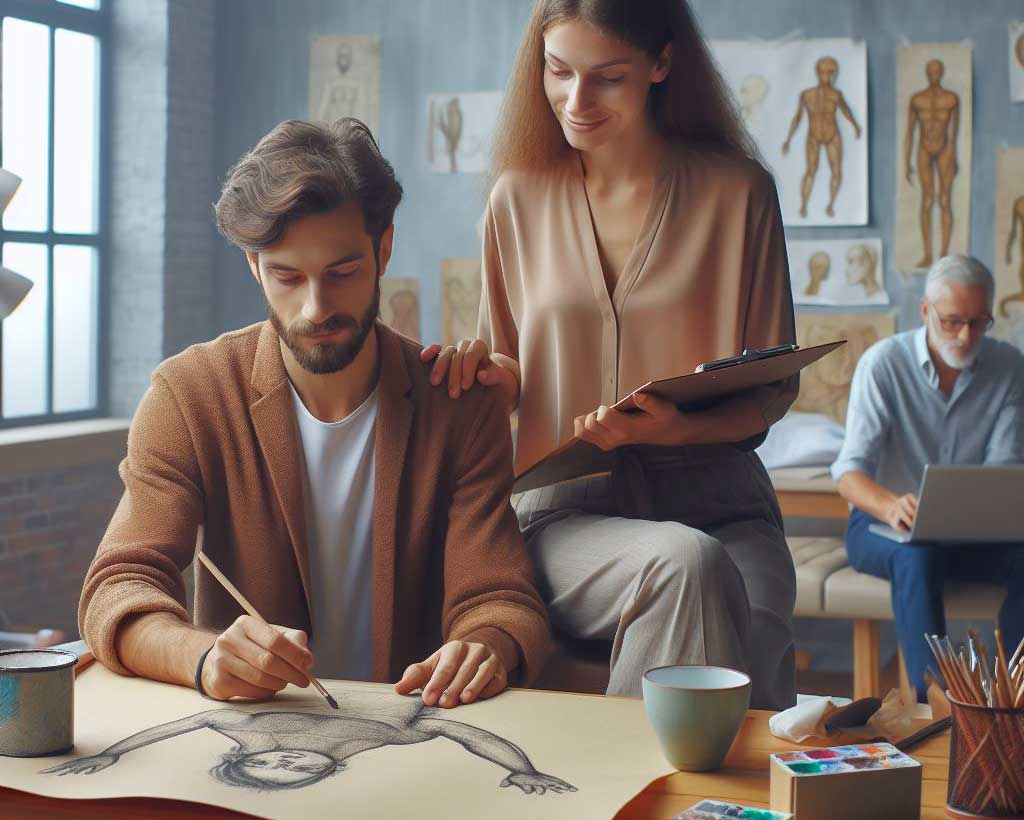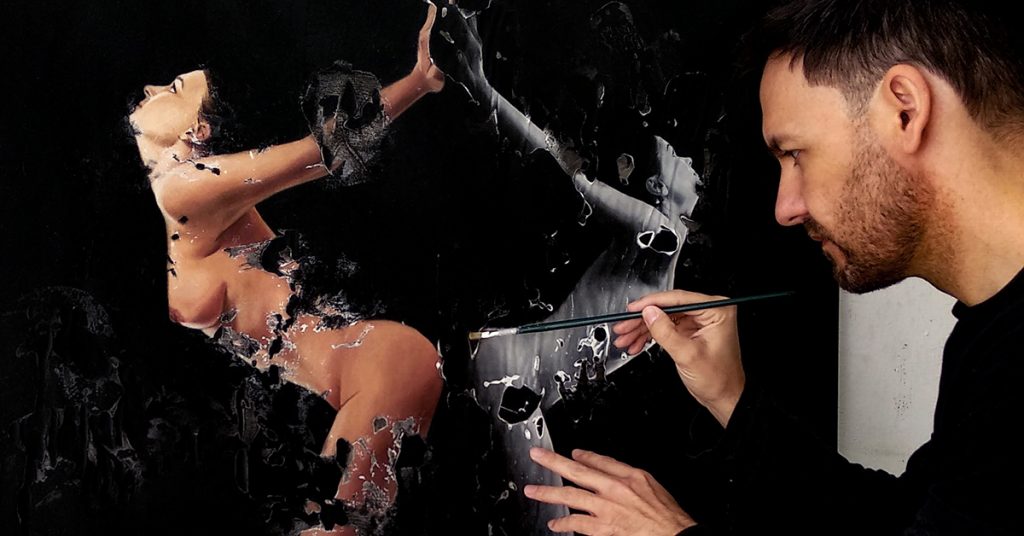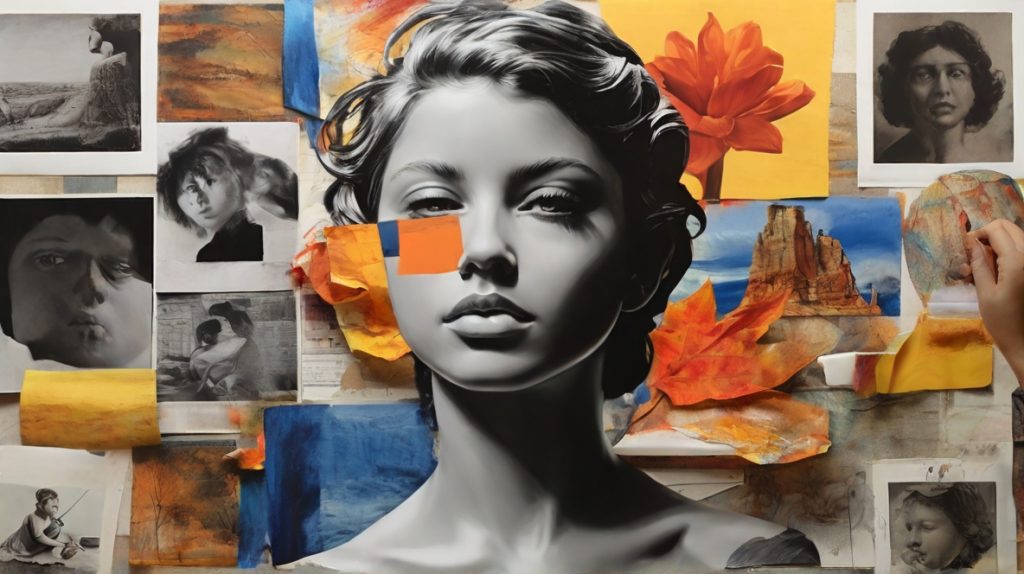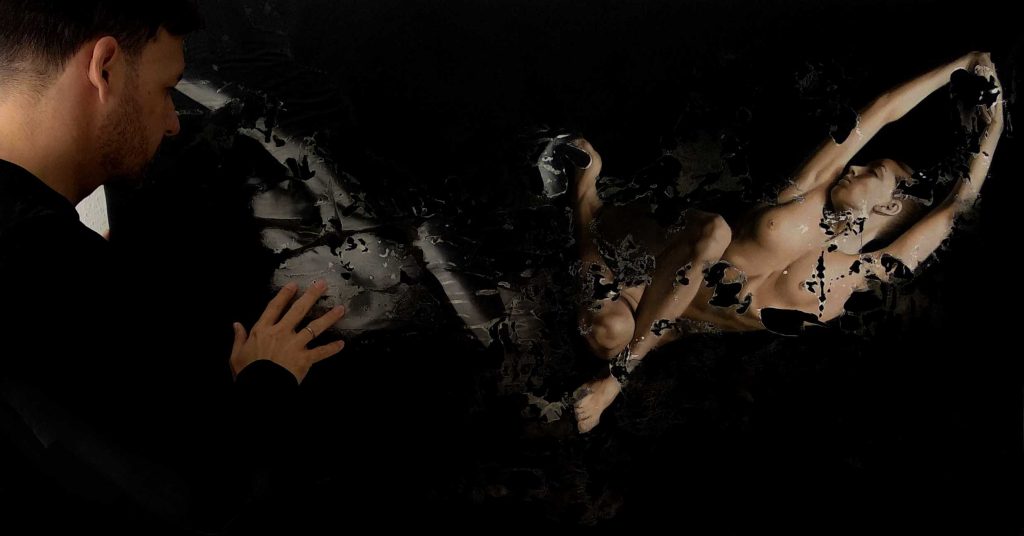
Introduction
Have you ever wondered what makes art different from craft? Or how to find your own creative voice and style? If you are an aspiring artist or craftsman, or simply curious about the world of creativity, this article is for you.
In this article, we will explore the distinctions and similarities between art and craft, and how they can inspire and enrich your creative journey. We will also provide some tips and questions to help you reflect on your personal preferences and goals, and encourage you to experiment with a hybrid approach that blends art and craft.
But first, let’s define what we mean by art and craft, and why it is important to understand their differences.
Defining Art and Craft


Art and craft are two broad categories that encompass various forms of creative expression. While they share some common elements, such as aesthetics, materials, and techniques, they also have distinct characteristics that set them apart.
Art: Expressing Emotion and Concept
Art is generally defined as the expression of emotion and concept through visual, auditory, or performative means. It´s often subjective, abstract, and open to interpretation. It aims to evoke feelings, thoughts, and reactions in the viewer or listener, and to communicate a message, idea, or vision.
Some examples of art forms are painting, sculpture, photography, music, poetry, and dance. Artists have the freedom to explore diverse forms and styles, and to experiment with different media and methods. Art is not bound by rules or conventions, but rather by the imagination and creativity of the artist.
Craft: Precision and Skill
Craft is generally defined as the creation of functional or decorative objects by hand, using skill and precision. It´s often objective, concrete, and based on standards. It aims to produce quality, utility, and beauty in the product, and to demonstrate the mastery and expertise of the maker.
Some examples of craft forms are pottery, woodworking, knitting, embroidery, and jewelry making. Craftsmen follow a disciplined practice that requires attention to detail, technique, and accuracy. Craft is guided by rules and traditions, but also by the innovation and adaptation of the craftsman.
Artistic Freedom versus Skill Mastery


As we have seen, art and craft have different goals, approaches, and outcomes. One of the main differences between them is the degree of artistic freedom and skill mastery involved in each.
Artistic Freedom in Art
Artistic freedom is the ability and right of artists to express themselves without censorship, restriction, or interference. It is a fundamental value and principle of art, as it allows artists to explore their emotions, concepts, and visions, and to challenge the norms and expectations of society.
Artists enjoy a high degree of artistic freedom, as they can choose the form, style, medium, and method of their expression. They can experiment with different techniques and materials, and create original and unique works. They can also break the rules and conventions of art, and invent new ones.
Artistic freedom enables artists to transcend the boundaries of reality and logic, and to create works that are imaginative, innovative, and inspiring.
Skill Mastery in Craft
Skill mastery is the ability and achievement of craftsmen to create products that are of high quality, utility, and beauty, using their skill and precision. It is a fundamental value and principle of craft, as it demonstrates the craftsmanship and expertise of the maker.
Craftsmen strive for a high degree of skill mastery, as they follow a rigorous and meticulous practice that requires attention to detail, technique, and accuracy. They use specialized tools and equipment, and follow established standards and traditions. They also refine and improve their skills over time, and learn from other craftsmen.
Skill mastery enables craftsmen to produce products that are functional, durable, and elegant, and that reflect their craftsmanship and pride.
The Intersection: Artisanal Crafts and Fine Arts


While art and craft have distinct differences, they also have some similarities and overlaps. In fact, there are many forms of creative expression that blend art and craft, and that challenge the rigid definitions and classifications of each.
Artisanal Crafts as a Blend
Artisanal crafts are crafts that incorporate artistic elements, such as design, color, texture, and pattern. They are often handmade, unique, and customized, and they reflect the personality and style of the maker. They also have a functional or decorative purpose, and they are made with skill and precision.
Some examples of artisanal crafts are quilting, mosaic, origami, and soap making. Artisanal crafts are becoming more popular and appreciated in contemporary art, as they showcase the diversity and creativity of craftsmen, and as they offer an alternative to mass-produced and standardized products.
Fine Arts Embracing Craftsmanship
Fine arts are art forms that are considered to have a high aesthetic value and cultural significance, such as painting, sculpture, and photography. They are often displayed in museums, galleries, and exhibitions, and they are admired for their artistic expression and vision.
Some fine arts, however, also embrace craftsmanship, as they integrate meticulous skill and precision in their creation. They use specialized tools and techniques, and they follow strict standards and criteria. They also produce works that are functional, durable, and elegant, and that reflect their mastery and expertise.
Some examples of fine arts that embrace craftsmanship are stained glass, metalwork, and printmaking. These fine arts demonstrate the potential and beauty of blending art and craft, and they inspire admiration and respect for both artists and craftsmen.
Finding Your Creative Path


Now that we have explored the differences and similarities between art and craft, you might be wondering how to find your own creative path and style. Are you more drawn to art or craft, or to a blend of both? How do you express your emotions and concepts, or demonstrate your skill and precision?
There is no definitive answer to these questions, as each person has their own preferences, goals, and inclinations. However, here are some tips and questions to help you reflect on your personal style and to guide you on your creative journey.
Self-Reflection on Personal Style
One of the first steps to finding your creative path is to reflect on your personal style, and to identify what you enjoy and what you are good at. Here are some questions to help you with your self-reflection:
- What are your passions and interests? What topics or themes do you like to explore or learn about?
- What are your strengths and weaknesses? What skills or talents do you have or want to develop?
- What are your values and principles? What do you believe in or stand for?
- What are your goals and aspirations? What do you want to achieve or express through your creativity?
- What are your influences and inspirations? Who are the artists or craftsmen that you admire or emulate?
By answering these questions, you can gain a better understanding of yourself and your creative identity, and you can discover what makes you unique and authentic.
Embracing a Hybrid Approach
Another step to finding your creative path is to embrace a hybrid approach, and to experiment with blending art and craft. By doing so, you can expand your horizons and possibilities, and you can enrich your creative experience and output.
Here are some benefits of embracing a hybrid approach:
- You can learn from both art and craft, and apply their principles and techniques to your own work.
- You can balance your artistic freedom and skill mastery, and find the optimal level of expression and precision for your work.
- You can create works that are both functional and aesthetic, and that appeal to a wider audience and market.
- You can challenge yourself and grow as a creative person, and discover new forms and styles of expression.
By embracing a hybrid approach, you can unleash your full potential and creativity, and you can create works that are original, innovative, and inspiring.
Conclusion
In this article, we have unraveled the differences and similarities between art and craft, and how they can inspire and enrich your creative journey. We have also provided some tips and questions to help you find your own creative path and style, and to encourage you to experiment with a hybrid approach that blends art and craft.
We hope that this article has sparked your curiosity and interest in the world of creativity, and that you have learned something new and useful. Whether you are an aspiring artist or craftsman, or simply a creative enthusiast, we invite you to appreciate both art and craft, and to embark on your unique and exciting artistic journey.
FAQs
Q: What is the difference between art and craft?
A: Art is the expression of emotion and concept, while craft is the creation of functional or decorative objects. Art is subjective, abstract, and open to interpretation, while craft is objective, concrete, and based on standards.
Q: What are some examples of art and craft forms?
A: Some examples of art forms are painting, sculpture, photography, music, poetry, and dance. Some examples of craft forms are pottery, woodworking, knitting, embroidery, and jewelry making.
Q: What are some benefits of blending art and craft?
A: Blending art and craft can expand your horizons and possibilities, balance your artistic freedom and skill mastery, create works that are both functional and aesthetic, and challenge yourself and grow as a creative person.
Q: How can I find my creative path and style?
A: You can find your creative path and style by reflecting on yourself, experimenting with art and craft, seeking feedback and guidance, and exploring different sources of inspiration. Your creative path and style may change as you grow and evolve.
Q: How can I improve my artistic freedom and skill mastery?
A: You can improve your artistic freedom by practicing and challenging your expression, and exposing yourself to diverse and innovative art.




